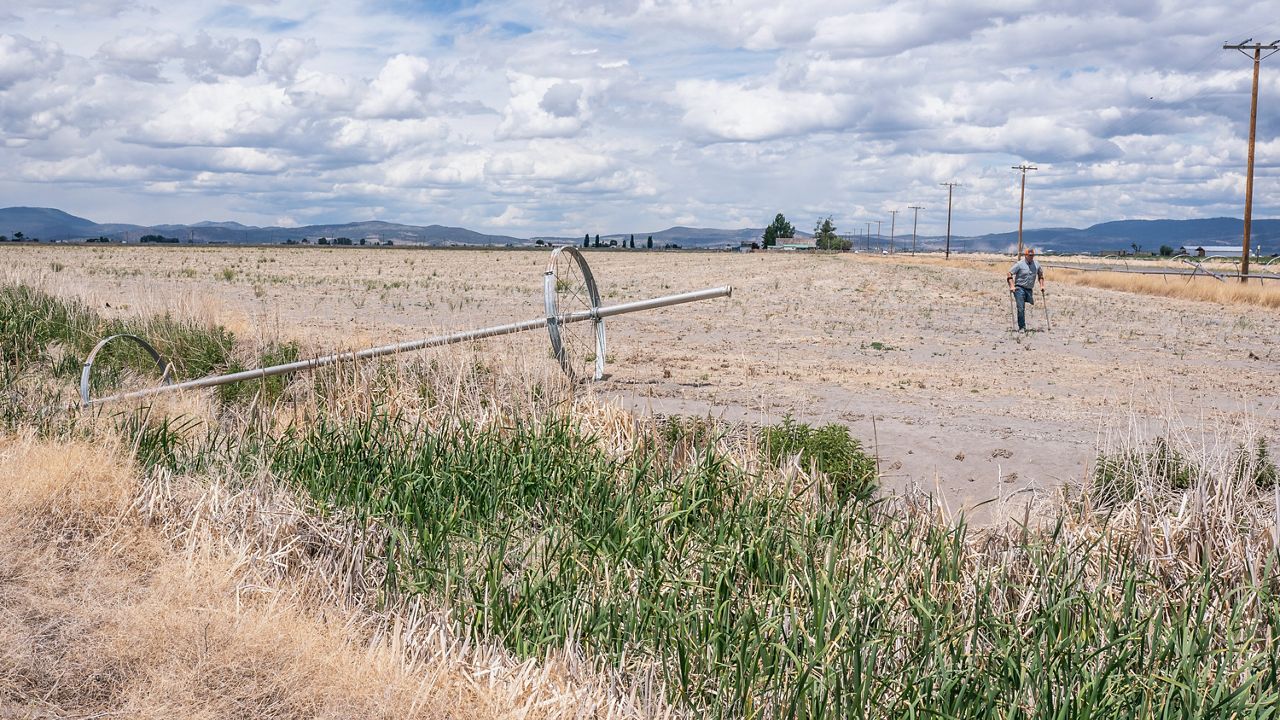SACRAMENTO, Calif. (AP) — The federal government said Wednesday it won't deliver any water to California farmers because of a severe drought, a decision that will force many to plant fewer crops in a region that supplies a quarter of the nation's food.
“It's devastating to the agricultural economy and to those people that rely on it,” said Ernest Conant, regional director for the U.S. Bureau of Reclamation. “But unfortunately we can't make it rain.”
The federal government operates the Central Valley Project in California, a complex system of dams, reservoirs and canals. It's one of two major water systems the state relies on for agriculture, drinking water, and the environment. The other system is run by the state government.
Water agencies contract with the federal government for certain amounts of water each year. In February, the federal government announces how much of those contracts can be fulfilled based on how much water is available. The government then updates the allocations throughout the year based on conditions.
Last year, farmers started the year with a 5% allocation from the federal government but ended at 0% as the drought intensified. This year, the federal government is starting farmers at 0% while water for other purposes, including drinking and industrial uses, is at 25%.
"Last year was a very bad year. This year could turn out to be worse,” Conant said.
Westlands Water District, the nation's largest agricultural water district covering 1,000 square miles (2,590 square kilometers) in Fresno and Kings counties, said drought conditions last year caused farmers to fallow 200000 acres (80,937 hectares) while leaving “thousands of acres of food unharvested.” The district said it is the fourth time this decade that farmers south of the San Joaquin-Sacramento River Delta have gotten no water from the federal government.
The water system operated by the state government is also struggling. In December, state officials also announced a 0% allocation. They upgraded that to 15% allocation in January after strong December storms.
State law requires both systems to have enough water available to maintain water quality throughout the San Joaquin-Sacramento River Delta, a sensitive environmental region home to endangered species of fish.
Despite that, endangered species of fish have — including salmon — have been dying by the thousands because there hasn't been enough cold water for them to survive.
In a news release, the Westlands Water District said it was disappointed with the allocation but said it understood the drought and environmental laws “prevent Reclamation from making water available under the District's contract.”
Regina Chichizola, executive director for Save California Salmon, said environmental water releases are important because they keep saltwater from the ocean from creeping too far into the freshwater rivers.
“Fish and people need that water,” she said.
Most of the water for both systems comes from rain and snow in the Sierra Nevada mountains. That water flows into the state's rivers, which then fill a series of major reservoirs throughout the state. Typically, the reservoirs get depleted during the dry summer months before being replenished by winter storms.
But California is now entering the third year of a severe drought, with rain and snowfall far below historical averages. January and February are historically the wettest months of the year in California. But the northern Sierra mountains, which are important for filling some of the state's biggest reservoirs, have had just 1.7 inches of rain over those two months. That's the lowest ever recorded, breaking a record set in 2013, said Kristin White, Central Valley operations manager for the U.S. Bureau of Reclamation.
The Central Valley Project's reservoirs have decreased by 26.5% compared with last year. And through the end of September, federal officials predict the reservoirs will get 1.2 million acre feet (1.4 billion cubic meters) less of water than they had planned. One acre-foot of water is typically enough to supply two average households for one year.
